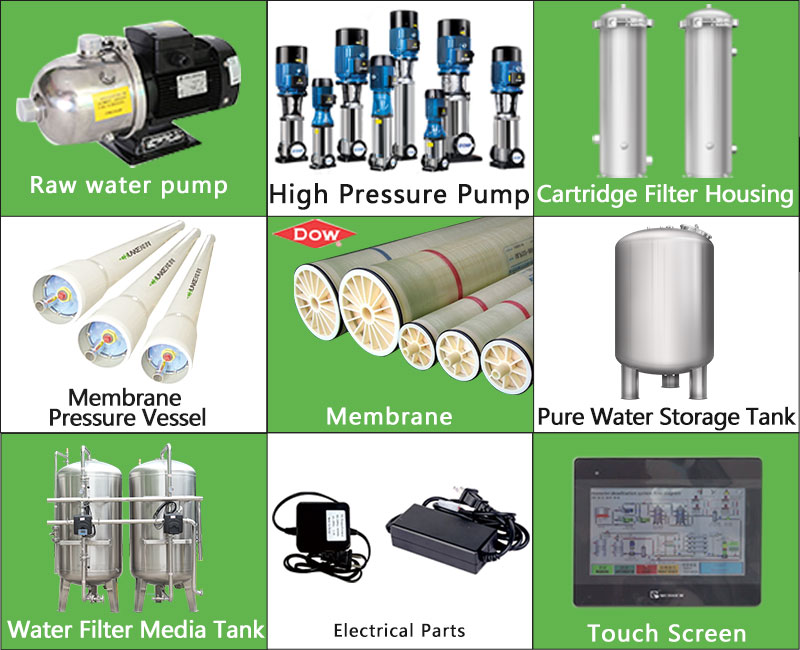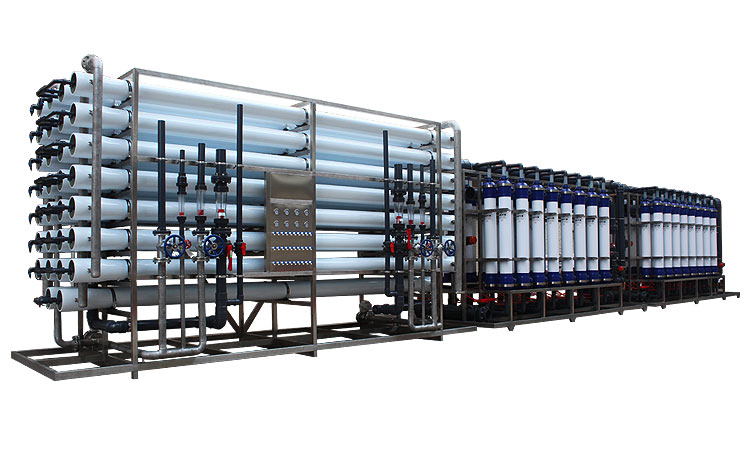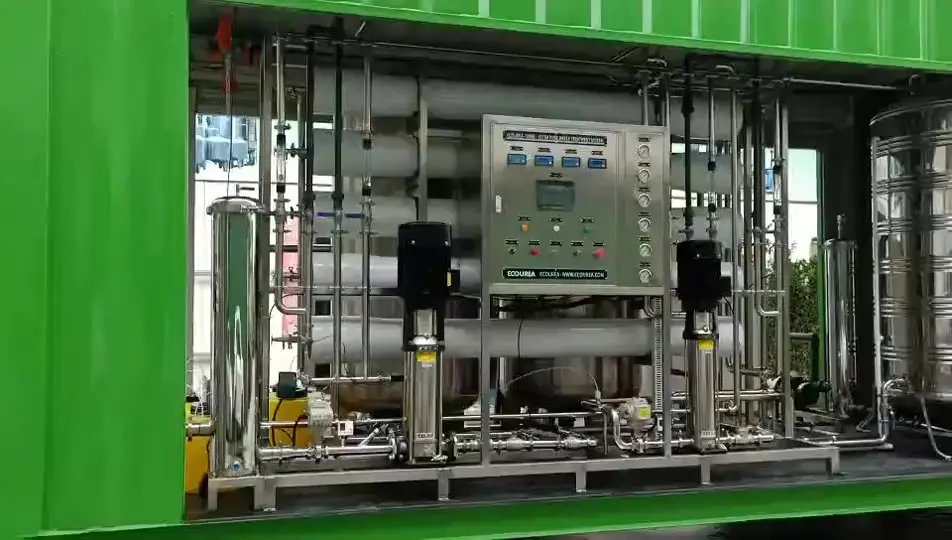What is the price of the reverse osmosis system in the Philippines?
The Philippines, as a beautiful island country, water resource management is particularly important. The reverse osmosis water purification system has received much attention in this country, and its price has become a hot topic of concern for citizens. This article will conduct an in-depth investigation into the prices of anti infiltration systems in the Philippines and provide readers with relevant information.
1.Introduction to reverse osmosis water purification system
Before discussing the price, let's first understand the basic situation of the reverse osmosis water purification system. Reverse osmosis system is an advanced water treatment technology that uses high pressure to force water through a semi permeable membrane, effectively intercepting harmful substances such as dissolved solids, bacteria, and viruses, in order to purify water quality. In the Philippines, where water resources are limited, this technology is highly valued.
Why is it called reverse osmosis?
Under natural conditions, the water on both sides of the semipermeable membrane flows from dilute solution to concentrated solution, but when we apply a large enough pressure on the concentrated solution side, the water will flow in the opposite direction from concentrated solution to dilute solution. The flow direction of this solvent is It is in the opposite direction to the original penetration, so it is called reverse osmosis.
Development history of reverse osmosis technology
The invention and large-scale application of reverse osmosis (RO) is a landmark achievement in the development of modern water treatment technology. As an advanced membrane separation technology developed after the 1950s, reverse osmosis has been widely used in seawater desalination, brackish water desalination, household water purification, and wastewater reuse. In 2018, the world's desalinated water produced using reverse osmosis technology reached more than 11 billion tons, which can be used by 320 million people.

2. Overview of the Philippine Anti Osmosis System Market
The Philippines has abundant water resources, but due to geographical distribution and water quality issues, improving the quality of drinking water has become an urgent problem to be solved locally. The reverse osmosis water purification system has a place in the market due to its high efficiency and reliability. There are multiple suppliers in the market, with a wide variety of products covering multiple fields such as household, industrial, medical, etc.
Application of reverse osmosis technology in the water treatment system of ILIJAN power plant in the Philippines:
The reverse osmosis seawater desalination process is increasingly becoming the dominant technology in the seawater desalination process due to its advantages of low equipment investment, low energy consumption, and short construction period. The ILIJAN power plant is one of the largest power plants in the Philippines, accounting for 12% of the country's total power generation. It was completed in June 2002 and its water treatment system uses reverse osmosis technology.
● ILIJAN power plant water treatment system situation
The produced water of the ILIJAN power plant water treatment system is mainly used as boiler feed water. It uses seawater offshore from Batangas City in the Philippines as raw water. The TDS of the raw water is 35 000~43 000 mg/L, and the conductivity is 46 000~53 000 μS/cm. . Seawater must undergo three levels of treatment before it can be used: The first level is seawater desalination treatment. The reverse osmosis system is a single-stage design, arranged in (19:0)×6, with a total of 3 sets of membrane stacks and a total of 342 membrane elements; The second stage is low-pressure desalination treatment, and the reverse osmosis system is a one-stage two-stage design, arranged in (5:3)×6, with a total of 3 sets of membrane stacks and a total of 144 membrane elements; the third stage is mixed bed treatment.
● Introduction to water treatment technology
The water intake of the water treatment system is near the coast. Since the seawater near the coast is easily polluted and the water quality varies greatly, in order to meet the system's water quality requirements for reverse osmosis incoming water, pretreatment has been strengthened in the process. Not only has a flocculation tank and The two-stage filtration device is also equipped with a security filter before the RO, with the purpose of effectively removing suspended solids, organic matter, colloidal substances, microorganisms, bacteria and other harmful substances in the incoming water through the pretreatment process. In addition, the incoming water was sterilized and algae treated in the pretreatment stage by adding oxidant (sodium hypochlorite solution) for sterilization, and sodium bisulfite was added to reduce excess oxidant before entering RO.
● Water production cost analysis
The water quality of the entire system basically meets the water needs of users, and the operation is stable. In the design of the reverse osmosis system, the optimal combination of the system is achieved. The water production cost per ton of water desalinated by membrane method in the power plant (seawater desalination system and low-pressure desalination system) is: fixed assets 2.1 yuan (including 1.2 yuan for the seawater desalination system); electricity cost 2.8 yuan (including 2.0 yuan for the seawater desalination system); membrane components The replacement cost is 0.52 yuan (including 0.3 yuan for the seawater desalination system); the maintenance cost is 0.15 yuan; the cost of chemical reagents and consumables is 0.3 yuan; and the labor and management cost is 0.15 yuan. Taking into account various expenses, the water production cost of the two-stage reverse osmosis system is 6.02 yuan/t.
The successful operation of the two-stage reverse osmosis membrane process in the water treatment system of the ILIJAN power plant in the Philippines has proven the feasibility of applying reverse osmosis technology in seawater desalination systems and power plant boiler feed water systems.
3. Price factors for reverse osmosis systems
The price of reverse osmosis water purification systems in the Philippines is influenced by various factors. Firstly, it is the brand and model of the equipment. Different brands and models of equipment may have differences in performance and configuration, resulting in certain price differences. Secondly, the processing capacity and filtration efficiency of the equipment are also key factors affecting the price, and high-performance systems are usually relatively expensive. Finally, the Philippine market supply and demand relationship and technological updates will also have an impact on the price of RO reverse osmosis membranes. When market demand is greater than supply, product prices tend to increase. When there is excess supply, prices may fall. At the same time, with the continuous advancement and updating of technology, new RO reverse osmosis membranes continue to emerge. These new products often have higher performance and lower costs, thus driving changes in market prices in the Philippines.

4. Price range of household reverse osmosis systems
For household users, there are various reverse osmosis water purification systems with different performance on the market. Some relatively simple household systems are priced relatively low, roughly between 5000 and 10000 Philippine pesos. Some high-end brands and high-performance systems may exceed 20000 Philippine pesos. The difference in price mainly depends on the filtering ability of the system, brand reputation, and after-sales service.
5. Price of industrial and commercial reverse osmosis systems
For industrial and commercial users, greater processing capacity and more efficient reverse osmosis water purification systems are needed. These types of systems are usually priced higher, possibly between tens of thousands to hundreds of thousands of Philippine pesos. The specific price depends on the scale and performance of the system, as well as whether a customized solution is needed.

6. Maintenance costs to consider
In addition to purchasing costs, users also need to consider the maintenance costs of the reverse osmosis system. This includes costs such as filter replacement and equipment maintenance. The after-sales service provided by some brands may have an impact on maintenance costs. It is also very important to understand and compare the maintenance costs of different brands when choosing a reverse osmosis water purification system.
7. The impact of user experience and word-of-mouth
In addition to price factors, user experience and word-of-mouth are also one of the considerations when choosing a reverse osmosis system. Some users may be more willing to choose brands with good reputation and user feedback, even if the price is relatively high. Therefore, when purchasing a reverse osmosis water purification system, in addition to paying attention to price, it is also necessary to pay attention to user evaluation and experience.

Through the above investigation, we found that the price of reverse osmosis systems in the Philippines is influenced by various factors, including brand, model, processing capacity, and after-sales service. Buyers need to consider these factors comprehensively when choosing to meet their water quality needs and budget considerations.




